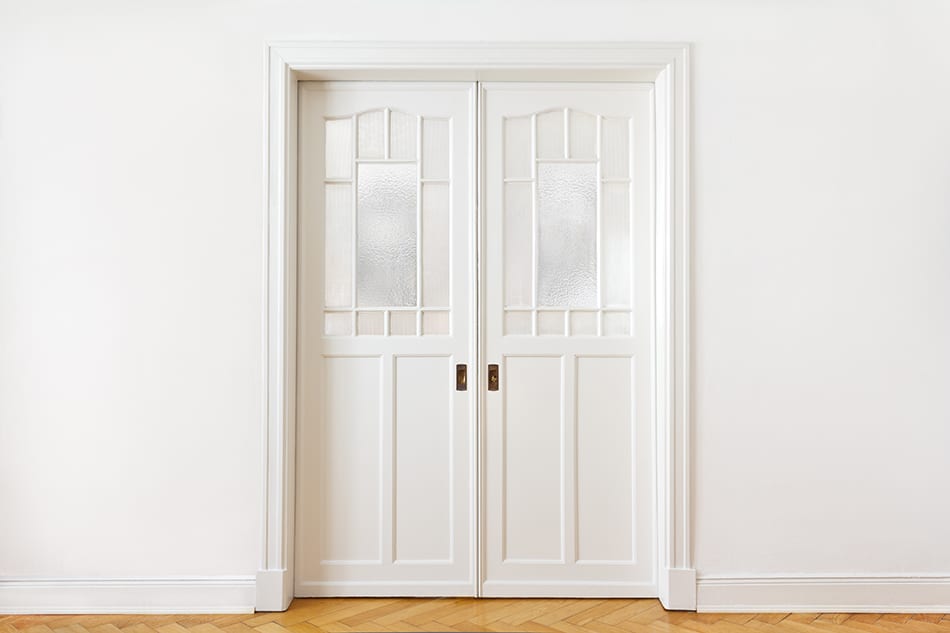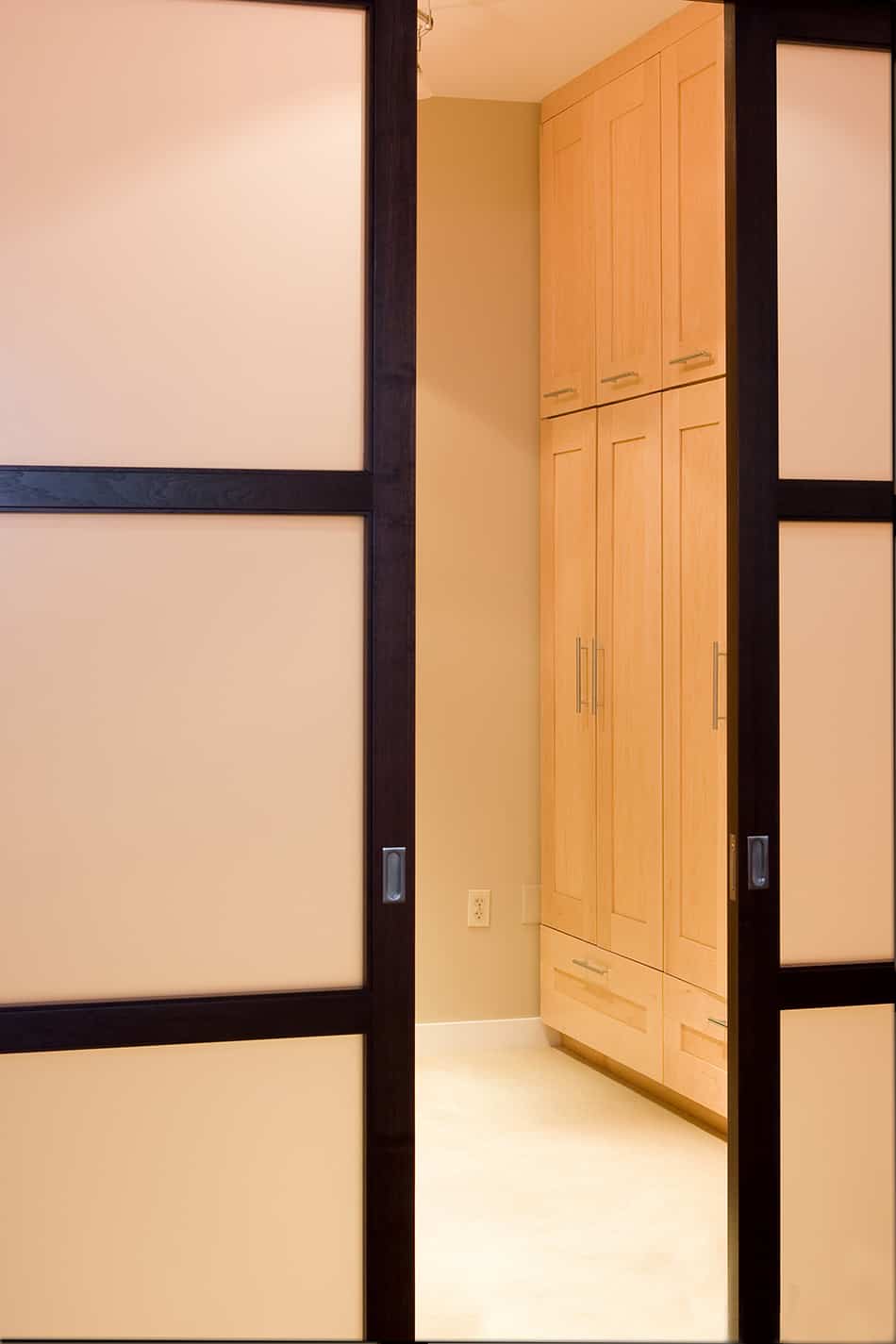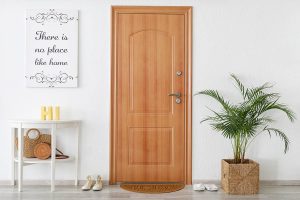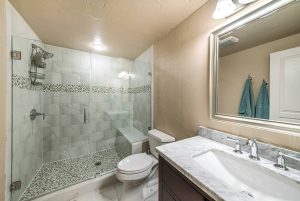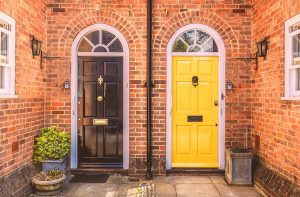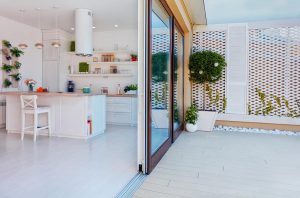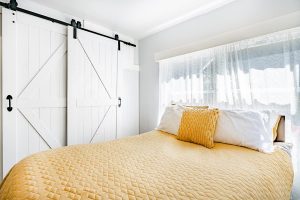When interior decorators discuss new improvements meant to save space, pocket doors are always at the top of the list. When well-constructed, pocket doors can increase a room’s ambiance, light sources, and space at the same time.
But are they right for your home? Which side would feel best in your bathroom? Which size should you choose?
Pocket Door Dimensions
Building your custom pocket doors is always an option, albeit an expensive one. Most of the time, contractors buy pre-made sets for a pocket door that include the sliding panels themselves, all the railings, and the adjacent wall where the door will be hidden.
These are available in a few standardized sizes. When choosing a pocket door, make sure to look at both the overall dimensions of the door (which will include the wall) as well as the “passage size,” which will tell you how much of an opening you will have. Keep in mind that the room needs to be wide enough to fit the overall dimensions, not just the passage.
Single Pocket Door Sizes
For small pocket doors: starting from an overall dimension of 51 ¾ inches x 86 ¼ inches, with a passage size of 23 5/8 inches x 78 ¾ inches.
Medium pocket doors range from overall dimensions 59 5/8 x 82 ¼ inches to 75 3/8 inches x 82 ¼ inches. In these cases, the passage sizes will range between 27 inches x 7 ¾ 8 inches to 35 inches x 78 ¾ inches.
Finally, large single pocket doors can have an overall dimension of 81 5/6 inches x 82 ¼ inches or 83 ¼ by 82 ¼ inches. These will have passage sizes of 37 3/8 inches x 78 ¾ inches and 38 3/8 inches x 78 ¾ inches.
You will have noticed a small discrepancy in the height of these walls: where the overall dimensions usually require 82 ¼ inches of space, from floor to ceiling, the actual passages are only 78 ¾ inches tall. This happens because you need to account for the upper railings, slides, and wheel mechanism. Most of these sizes also have a “high ceiling” version available, which usually requires a toral space of 86 inches, and it offers a passage that’s 82 inches tall.
For double pocket doors, dimensions can be trickier to figure out. This is because double doors will need hollow walls on each side of the door. Likewise, the passage size will need to be divided by two to calculate the size of each door panel.
Dimensions for Double Pocket Doors
| Size | Overall dimension | Total passage size | Door panel | Hollow door (per size) |
| Extra-small | 58 15/16 inches x 82 ¼ inches | 55 1/8 inches x 78 ¾ inches | 28 1/8 inches | 29 ½ inches |
| Small | 66 1/3 inches x 82 ¼ inches | 63 inches x 78 ¾ inches | 32 1/6 inches | 33 7/6 inches |
| Medium | 99 5/8 inches x 82 ¼ inches | 47 ¼ inches x 78 ¾ inches | 24 3/16 inches | 25 9/16 inches |
| Large | 146 7/8 inches x 82 ¼ inches | 70 13/16 inches x 78 ¾ inches | 36 inches | 37 3/8 inches |
| Extra large | 162 5/8 inches x 82 ¼ inches | 78 ¾ inches x 78 ¾ inches | 39 15/16 inches | 41 5/16 inches |
All the sizes listed above, for both single and double pocket doors, have a total thickness of 58 mm.
What Is a Pocket Door?
Pocket doors are a type of interior door that rolls in and out of the nearby wall instead of turning around on a hinge. Because of this, they eliminate the need to keep some free space immediately around it (the one that’s meant to allow you to swing the door open).
In addition, pocket doors have another main feature: the walls around them are meant to have a hollow “pocket” that renders them invisible when open. This differentiates them from standard sliding doors, which leave railings and door panels exposed.
There are two main types of pocket doors.
Single Pocket Doors
Single pocket doors are much simpler and consist of a single panel that rolls to one side. They are ideal for separating smaller areas from a big room (like the “study desk” from the rest of a bedroom). They are also commonly used in storage rooms, pantries, and for “Jack and Jill” bathrooms.
Double Pocket Doors
This imposing alternative consists of two main door panels, which usually open to the sides. Double pocket doors are commonly used in dining rooms: they offer a good way to alternate between keeping it as a separate room or merging it with the living room when there’s a party going on.
The resulting visual effect is very elegant. Well-constructed double pocket doors, especially when encased in a solid wall, tend to look sturdy and expensive.
Final Thoughts
Pocket doors are a great option if you want to save space or if you have a room that occasionally needs a private corner. When deciding on the door’s dimensions, take into account the overall space at your disposal, as well as the actual door size.
